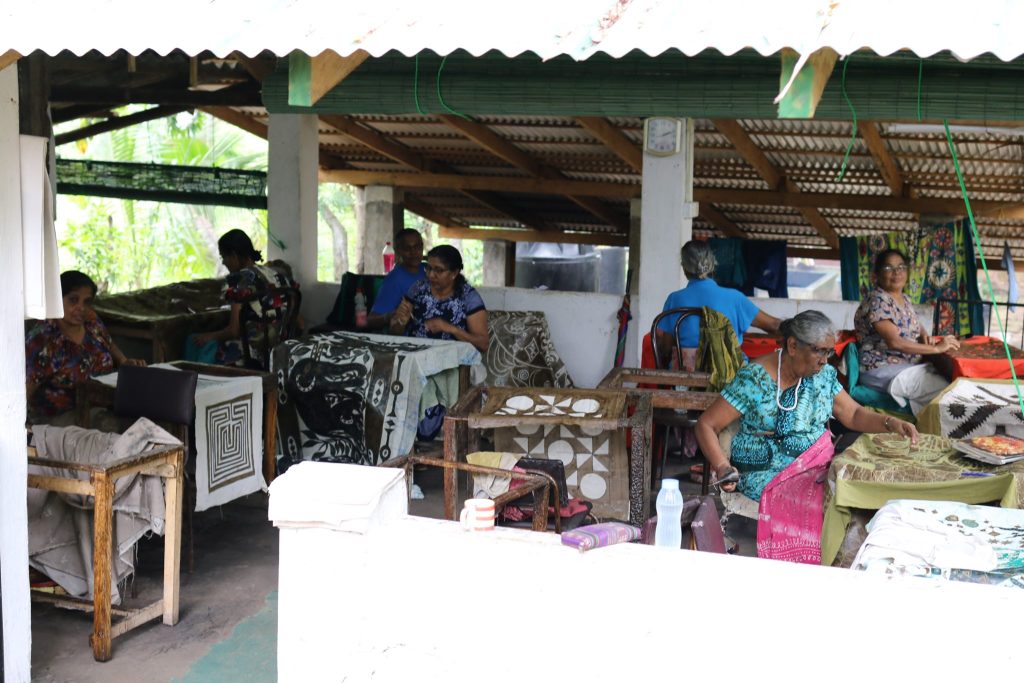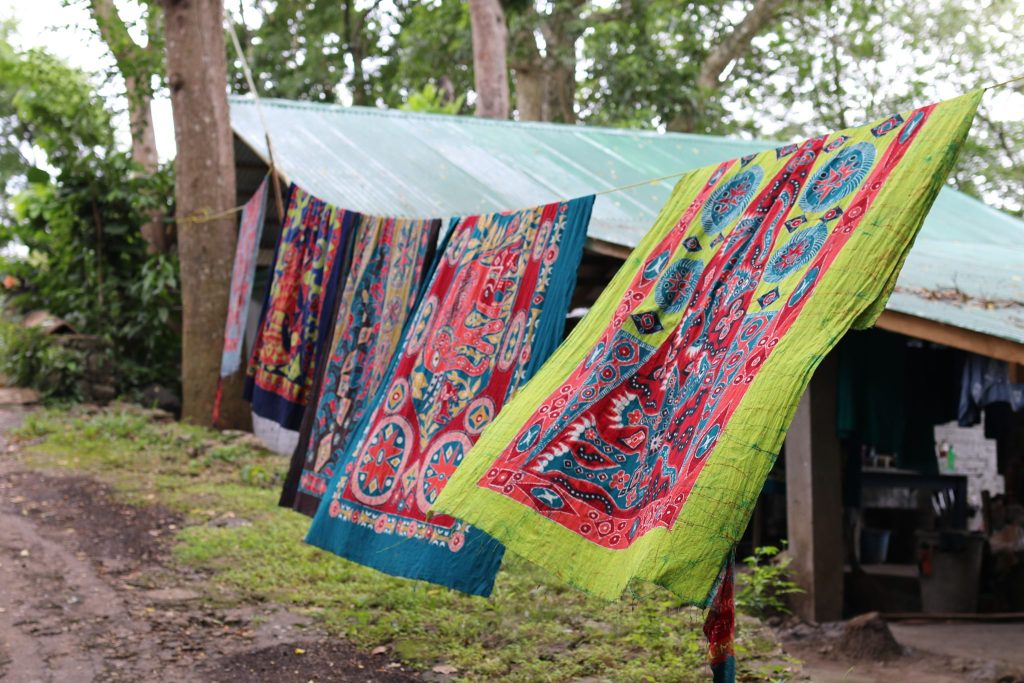Batik Making Process
Batik is a traditional wax resist dyeing technique that originated in Indonesia and was introduced to Sri Lanka by the Dutch in the 19th Century. It involves applying wax to fabric in specific patterns before dyeing it. The wax acts as a resist, preventing the dye from penetrating the areas where it has been applied.
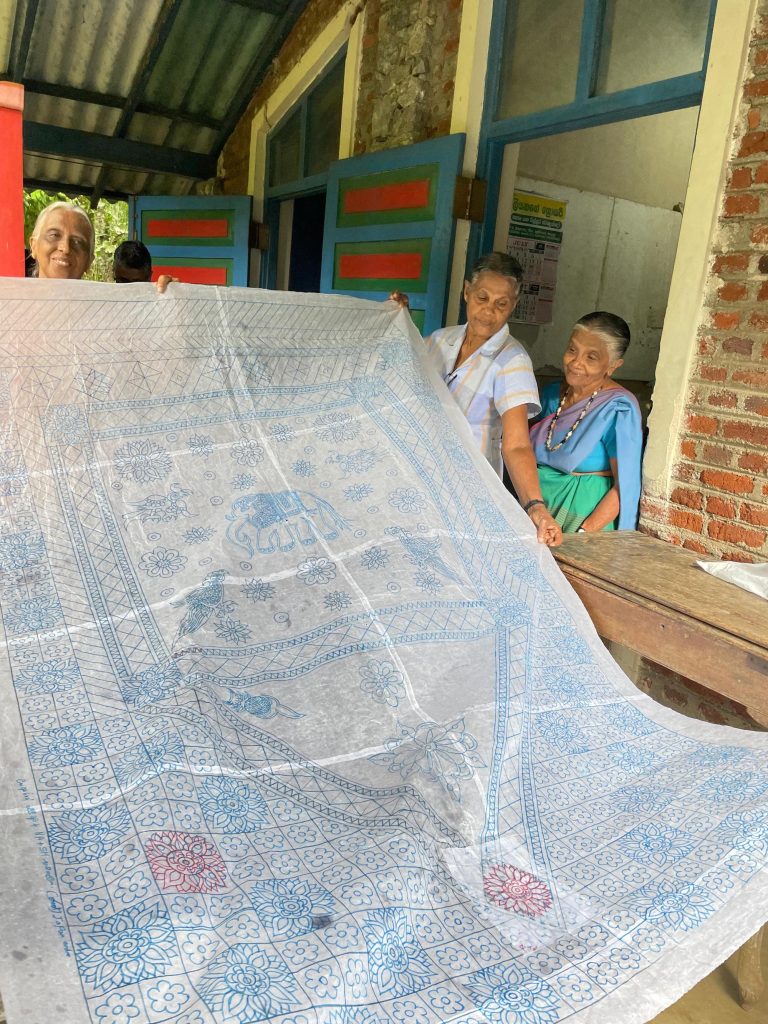
- Design Creation and Transfer : At the Aluwihare Heritage Centre, artisans select designs from the Ena de Silva archive, to be transferred onto the fabric. Existing designs may be resized, and modified to suit sizing and colour requirements and traced onto fabric using transfer paper.
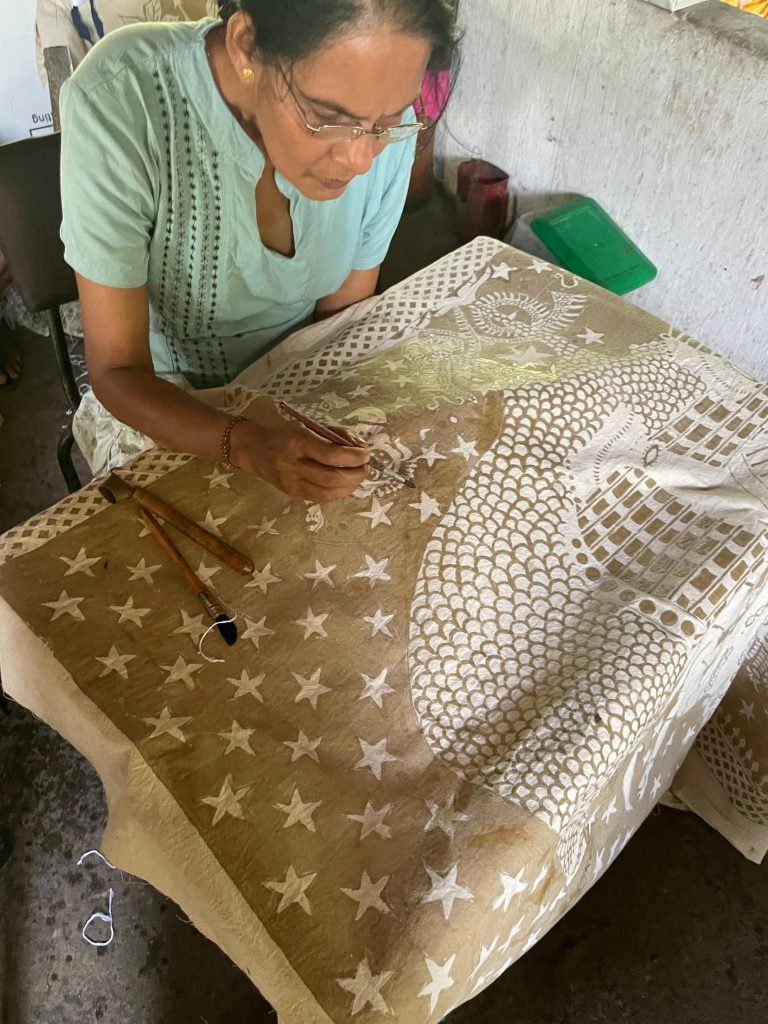
- Wax Application: Melted wax is carefully applied to the fabric using tools such as a canting/ tjanting (a pen-like tool), brushes or stamps. The wax defines the areas that will remain undyed. This process is repeated for each colour represented in the design.
A key feature of Ena de Silva’s Batiks is the triple waxing method, where wax is applied on the front, reverse, and front again to ensure the integrity of the design.
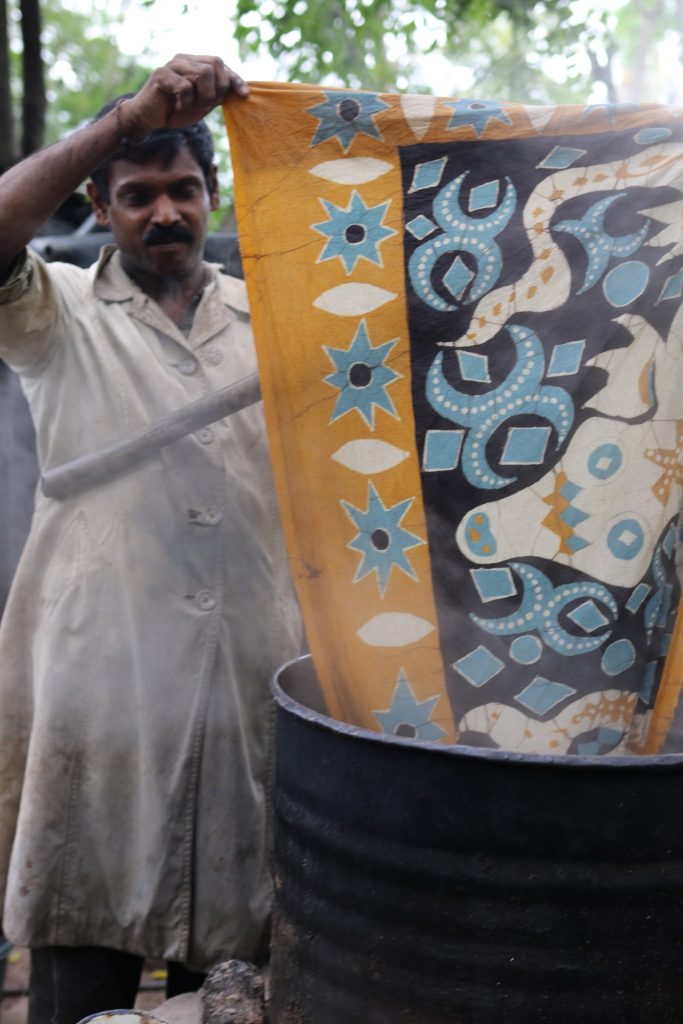
- Dyeing: After the wax has cooled and hardened, the fabric is dipped into a dye. The areas covered with wax will remain the original color of the fabric.
- Wax Removal: Once the desired colors have been achieved, the fabric is boiled or ironed to remove the wax, revealing the intricate patterns created by the resist method.
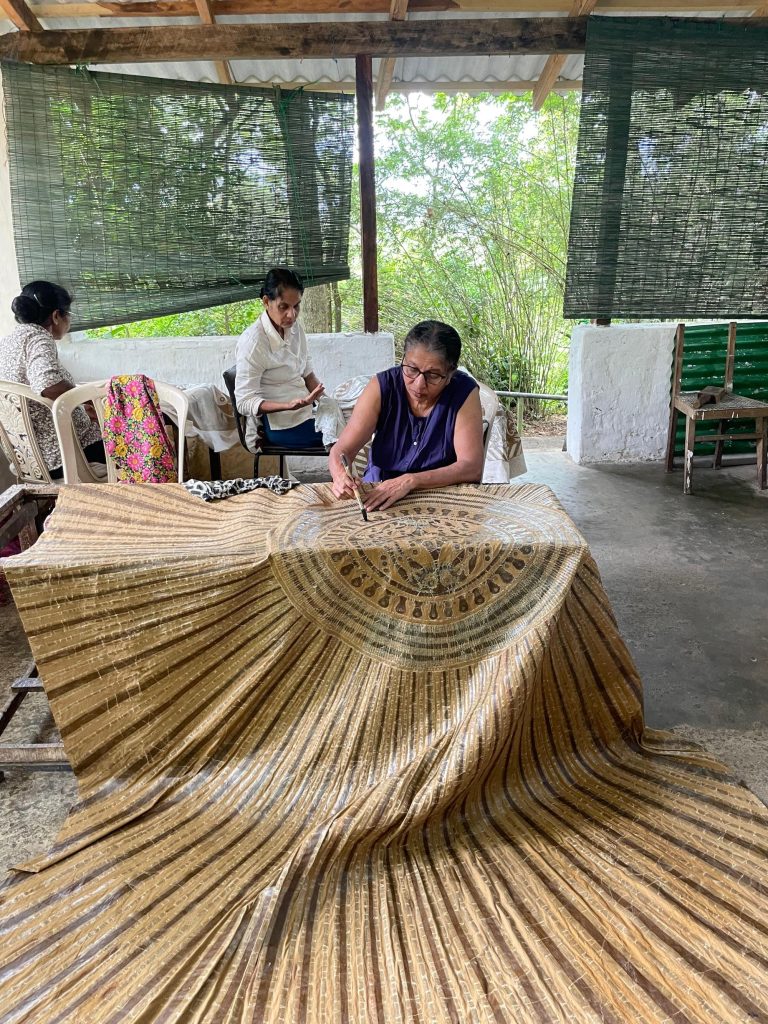
- Nuances: The fabric may undergo multiple waxing, dyeing and boiling steps depending on the complexity and depth of the design.
At the Aluwihare Heritage Centre, all of these processes are carried out by hand.




